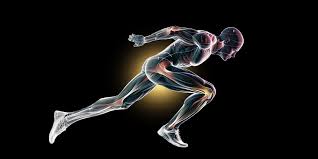When we watch elite sprinters like Usain Bolt or Shelly-Ann Fraser-Pryce explode off the blocks and charge down the track, we often marvel at their speed. But beneath the power and grace of each stride lies a crucial scientific discipline: biomechanics. It’s the hidden force behind sprinting success, shaping how athletes move, generate speed, and avoid injury.
So, what exactly is biomechanics, and how does it elevate sprinting performance to world-class levels?
Understanding Biomechanics in Sprinting
Biomechanics is the study of human movement using principles of physics and engineering. In sprinting, it involves analyzing how the body moves from the position of the limbs to the forces generated by the muscles and the contact with the ground.
Every phase of a sprint from the start to the drive, acceleration, and maximum velocity can be broken down biomechanically to enhance performance.
1. The Sprint Start: Where Explosiveness Begins
The sprint begins in the blocks, and this moment is critical. Biomechanics teaches athletes how to:
- Optimize their block position to create the best launch angle
- Generate maximal force against the blocks for propulsion
- React quickly to the starter’s gun by refining neural pathways
A strong, biomechanically efficient start can shave valuable milliseconds off a sprinter’s time.
2. Acceleration Phase: Building Speed Efficiently
Once out of the blocks, sprinters enter the acceleration phase, where they gradually build speed. Biomechanics focuses on:
- Forward lean of the torso, promoting horizontal force
- Powerful knee drive and optimal stride length
- Minimizing braking forces by ensuring the foot lands under the center of mass
Correcting poor posture or inefficient mechanics here can result in faster, smoother acceleration.
3. Top Speed Phase: Max Velocity Mechanics
At maximum velocity, the key is not just to go fast but to maintain that speed efficiently. Biomechanical optimization at this stage includes:
- Short ground contact time (explosive push-offs)
- High stride frequency without overstriding
- Relaxation in the upper body, preventing wasted energy
This is where elite sprinters stand out: their biomechanics allow them to maintain peak speed longer than their competitors.
4. Arm Action and Coordination
The arms play a vital role in balance and rhythm. Proper arm swing mechanics contribute to:
- Enhanced stride frequency
- Greater torso stability
- Better synchronization with lower-body movements
Biomechanics helps athletes refine their arm angles and minimize excessive movement that can lead to inefficiencies or imbalances.
5. Injury Prevention Through Biomechanics
Sprinting puts immense stress on the body, especially the hamstrings, hips, and knees. Biomechanical analysis identifies movement patterns that might lead to overuse or acute injuries.
Tools like motion capture, force plates, and wearable sensors allow coaches and sports scientists to:
- Detect asymmetries
- Address imbalances in muscle strength
- Correct poor running form before injury occurs
By optimizing technique, biomechanics helps sprinters stay healthy and consistent throughout their careers.
6. Personalized Performance Enhancements
Biomechanics isn’t one-size-fits-all. What works for one sprinter may not suit another. Through individual assessments, athletes can:
- Find their ideal stride length and frequency
- Adjust their starting angles
- Develop drills specific to their mechanics
This personalized approach ensures that each athlete maximizes their own potential rather than mimicking others.
Science Meets Speed
In sprinting, fractions of a second make all the difference. While strength, genetics, and mental toughness play major roles, biomechanics is the secret sauce that refines raw talent into world-class performance.
It’s the quiet partner in every fast finish and record-breaking run a blend of science, technique, and precision that turns powerful athletes into the fastest people on Earth.
As technology continues to evolve, expect biomechanics to become even more central to sprinting success. Because when it comes to reaching top speed, how you move matters just as much as how fast you can go.

